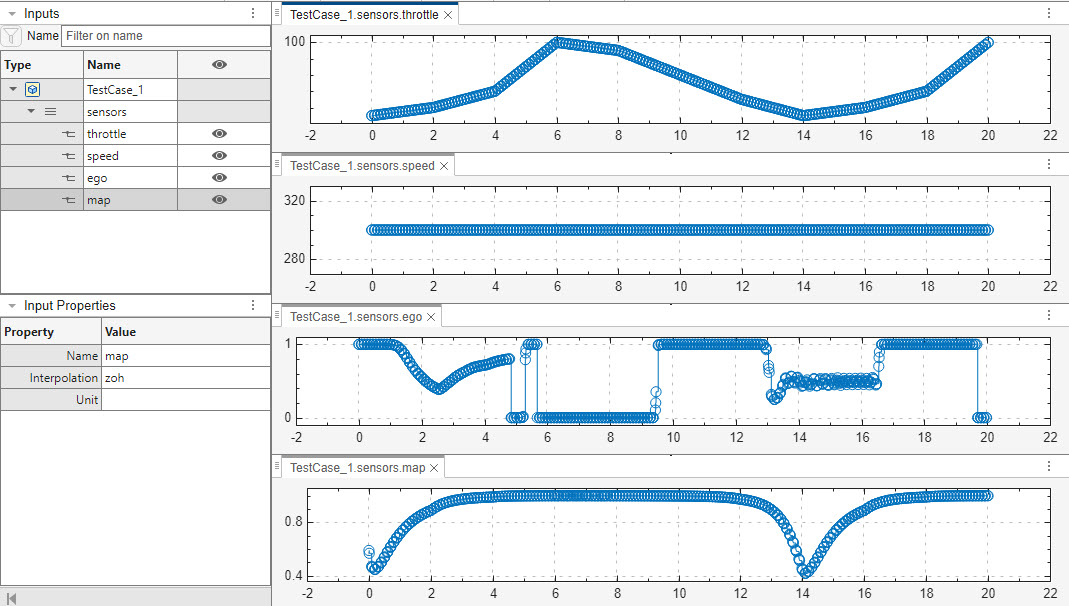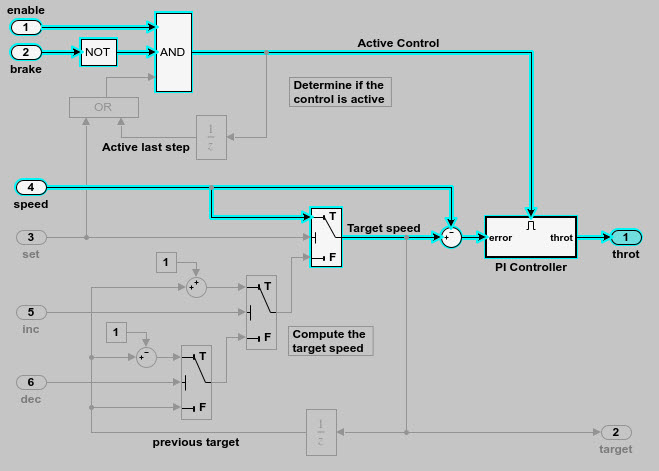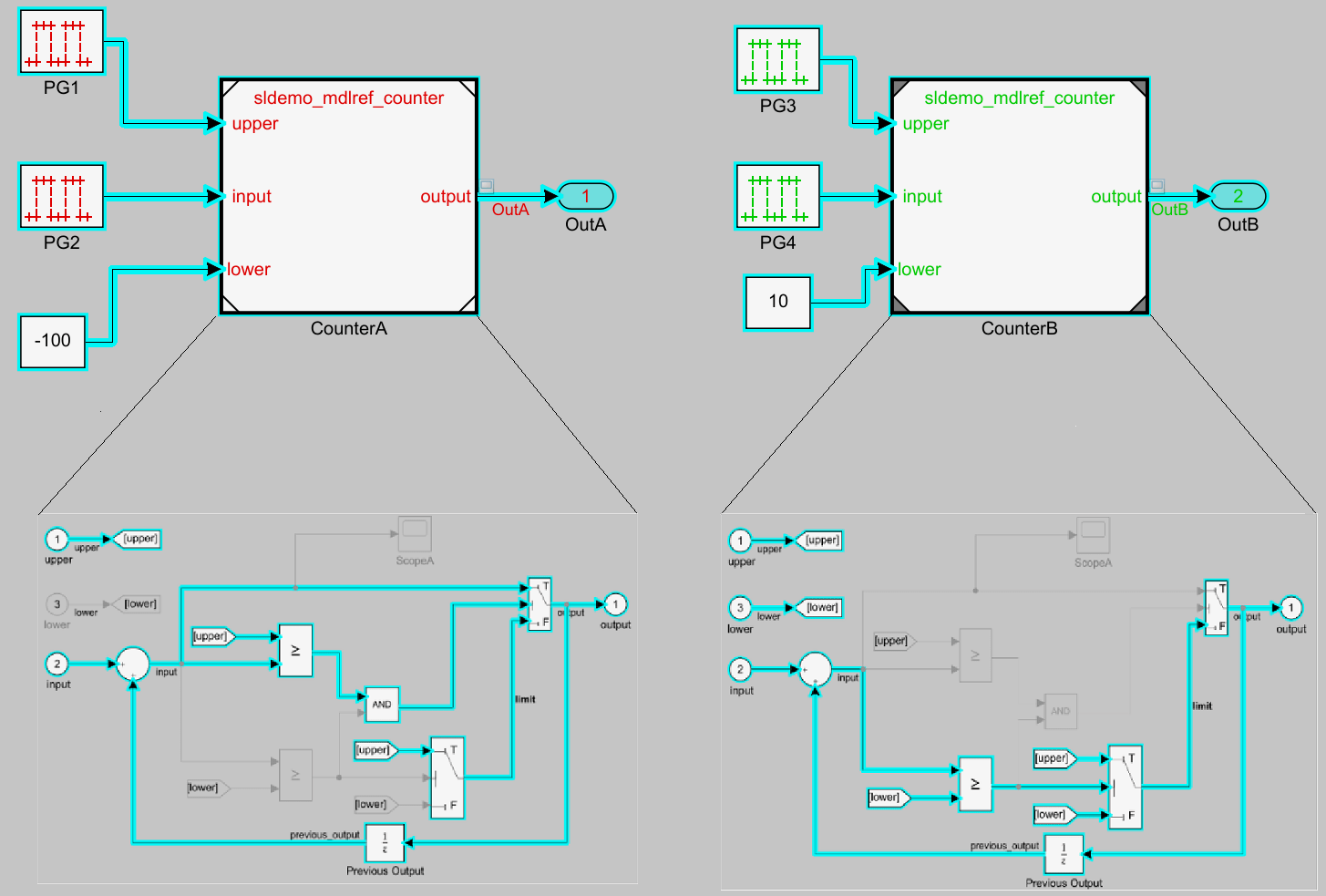用依赖关系分析简化模型
跟踪端口、信号和模块的依赖关系,将较大的模型分割成简化的独立模型
依赖关系分析可确定整个模型中模块、信号和模型组件的相互依赖关系。使用 Model Slicer 可更好地了解大型或复杂模型中的功能依赖关系,其中确定依赖关系可能会耗时较长。请参阅Workflow for Dependency Analysis。
类
SLSlicerAPI.SLSlicer | Class representing a set of Model Slicer functionality |
SLSlicerAPI.ParameterDependence | 用于确定参数对 Simulink 模型的影响的类 (自 R2021b 起) |
函数
slslicer | 创建用于调用模型切片器的 API 对象 |
slsliceroptions | Create options object for configuring Model Slicer |
slslicertrace | 使用模型切片器后返回切片模型或源模型中的模块句柄 |
主题
依赖关系分析简介
- 创建简化的独立模型
描述用于生成简化模型的用例。 - Highlight Functional Dependencies
Use Model Slicer to highlight functional dependencies and refine the highlighted portion of your model using constraints and exclusions. - Using Model Slicer with Stateflow
Describes the workflow for using Model Slicer with Stateflow® and the behavior of Model Slicer with regards to Stateflow. - Highlight Active Time Intervals by Using Activity-Based Time Slicing
Use activity-based time slicing to highlight and slice simulation intervals in which all selected states and transitions are simultaneously active. - Configure Model Highlight and Sliced Models
Model Slicer configuration window and Model Slicer options. - Isolate Model Components for Functional Testing
Describes how to slice the model components for debugging and refinement. - 使用模型切片器观察 Simulink 参数的影响
使用模型切片器来观察某个参数对模型的影响。 - 以编程方式生成 I/O 依赖关系矩阵
以编程方式生成 I/O 依赖关系矩阵。 - Analyze Models Containing Simulink Functions Using Model Slicer
Analyze models that contains Simulink Functions using Model Slicer. - Model Slicer Considerations and Limitations
Describes limitations and considerations of Model Slicer.
优化突出显示的模型
- Refine Highlighted Model
Describes using simulation time and exclusions to narrow a model highlight. - Refine Highlighted Model Slice by Using Model Slicer Data Inspector
Use Model Slicer Data Inspector to inspect logged signals and refine the highlighted model slice. - 为依赖关系分析细化死逻辑
使用模型切片器细化死逻辑并突出显示功能依赖关系。 - Debug Slice Simulation by Using Fast Restart Mode
Use fast restart to debug a slice simulation by stepping through the time steps. - Programmatically Resolve Unexpected Behavior in a Model with Model Slicer
Detect unexpected behavior, and use Model Slicer to programmatically isolate and resolve the unexpected behavior. - Refine Highlighted Model by Using Existing .slslicex or Dead Logic Results
Instructions on how to use existing data to highlight functional dependencies in a model.
创建简化的独立模型
- 创建简化的独立模型
描述用于生成简化模型的用例。 - Simplify a Standalone Model by Inlining Content
Describes how to use the inline content options. - Simplification of Variant Systems
Tutorial describing how to use the Variant Manager to reduce a model to a simplified, standalone model containing only selected variant configurations.



